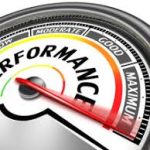Performance Reporting and the Operational Restructuring Process
 When companies begin to struggle financially and decide to institute a restructuring initiative to turn things around, many focus solely on the financial aspects of the organization. Unfortunately, this approach ignores the tremendous long-term value that operational improvements can deliver.
When companies begin to struggle financially and decide to institute a restructuring initiative to turn things around, many focus solely on the financial aspects of the organization. Unfortunately, this approach ignores the tremendous long-term value that operational improvements can deliver.
As a business seeks to regain financial stability, a matching pursuit of operational excellence can help the company realize and capitalize on new opportunities. Finance and operations should be viewed as interconnected functions that complement one another. A boost in operational productivity can be a critical component of a successful turnaround that supports business strategy while contributing to bottom-line, financial results.
Fortunately, corporate restructuring during a downturn in business doesn’t always require a complete overhaul of structure and processes. It can be a series of initiatives to improve the business’s performance — often referred to as operational restructuring. When carefully planned and executed, operational restructuring can have as profound an effect on results as a major re-engineering initiative.
How Does Performance Reporting Come Into Play?
Operational performance analytics support an operational restructuring initiative by helping businesses pinpoint performance issues and their root causes. As a matter of fact, more of the manufacturing organizations that we work with are putting added emphasis on the use of operational analytics and reports on a day-to-day basis because they play a pivotal role in driving profits and creating competitive advantage in such areas as:
- Manufacturing / distribution optimization: With operational performance analytics, a manufacturing business can pinpoint trends and anomalies that impact transportation, warehousing, labor, inventory, raw materials, and other areas to help the business strike the right balance between service and cost.
- Rapid plant improvement / turnaround: Operational performance reporting can also help manufacturing organizations better assess, valuate and prioritize risks and opportunities relative to production execution.
- Demand-driven supply chain management: When combined with effective S&OP practices, operational performance analytics can help businesses improve sales revenues, cut operating costs and reduce inventory.
Our experience with mid-market manufacturers and distributors has shown that the deployment of financial and operational metrics is still an evolving process. Before starting to work with Silvon, many of our clients were generating an abundant amount of information that was never assembled by them in a way that provided a timely picture of their performance. As a result, sales dips and spikes in key production costs often were not identified until weeks, and in some cases, months after the fact – forcing some restructuring initiatives as a result.
Even having a flash report that shows key metrics for revenue, operating performance and working capital is highly effective. These metrics need to be studied objectively on a weekly or even daily basis by business leaders across the organization. And, they must be applied consistently to enable swift adjustments to business plans when needed. By clearly identifying the root causes of performance issues, operational performance reporting can help organizations achieve both short-term, bottom-line improvement and long-term growth.
THE TAKEAWAY: Effective performance controls and reports underpin business success and should be the foundation of any operational improvement (or restructuring) program.